- News
- Reviews
- Bikes
- Components
- Bar tape & grips
- Bottom brackets
- Brake & gear cables
- Brake & STI levers
- Brake pads & spares
- Brakes
- Cassettes & freewheels
- Chains
- Chainsets & chainrings
- Derailleurs - front
- Derailleurs - rear
- Forks
- Gear levers & shifters
- Groupsets
- Handlebars & extensions
- Headsets
- Hubs
- Inner tubes
- Pedals
- Quick releases & skewers
- Saddles
- Seatposts
- Stems
- Wheels
- Tyres
- Tubeless valves
- Accessories
- Accessories - misc
- Computer mounts
- Bags
- Bar ends
- Bike bags & cases
- Bottle cages
- Bottles
- Cameras
- Car racks
- Child seats
- Computers
- Glasses
- GPS units
- Helmets
- Lights - front
- Lights - rear
- Lights - sets
- Locks
- Mirrors
- Mudguards
- Racks
- Pumps & CO2 inflators
- Puncture kits
- Reflectives
- Smart watches
- Stands and racks
- Trailers
- Clothing
- Health, fitness and nutrition
- Tools and workshop
- Miscellaneous
- Buyers Guides
- Features
- Forum
- Recommends
- Podcast
How to set your saddle height - get it right for improved comfort and power
There are few more important metrics to consider when setting up your bike than how and where you sit. Obviously, the saddle is the physical where, but it's precise positioning, and in particular, its height, has a direct effect on the power you can apply to the pedals and your fundamental comfort while riding. The two issues are connected, so here's how to get it right.
Our guide below shows you what we believe is the best method to set your saddle height. We've included a list of the tools and materials that you will need to complete the job and in some cases where you can buy them. If there are others that you prefer then feel free to let everybody know in the comments.
Tools & Materials
- Tape measure
- Allen keys
- Friend
- Electrical tape
1. Seat post.
Adapting the saddle height to suit your personal physiology is relatively easy thanks to seat posts which slide up and down the inside of the seat tube. The seat tube is connected at the bottom bracket to the cranks where your power is transferred to the bike. Setting the saddle height measurement will depend on your personal measurements from crotch to foot.
2. Finding the truth. There are many old wives tales, arcane theories and mathematical formulae to give a to-the-millimetre answer to your personal saddle height measurement; from the classic 109% of inside leg length from saddle top to pedal - with crank set to six o'clock, to the newer 88.3% of inside leg length for centre of the bottom bracket - to top of saddle, as favoured and practised by three time Tour De France winner Greg Lemond. Whether you measure centre to top or pedal to top, why does it have to be so exact? With research showing that as little as five millimetres discrepancy has a major effect on power, and a potential source of injury and discomfort, so, getting the precise measurement dialled in is really important.
3. The numbers game. I’ve always measured my personal saddle height from centre of the bottom bracket axle, to the saddle top. Using this metric, I eventually settled on 72cm dead - as the saddle height which gave me best power and maximum comfort (when riding 175mm crank arms as I always do - I'm a mountain biker at heart). My inside leg measurement is 81.5cm. So, out of curiosity, I checked this matrix using the Greg Lemond 88.3% formulae, and by that calculation my ideal saddle height would be 71.9cm. So, my 'by feel' measurement was correct to within a millimetre. Cue mild smug face. Use whichever calculation method works for you, but don't stop tweaking the measurement if the result doesn't feel optimal when you're riding.
4. A friend indeed. It sounds daft, but when making the the calculation based on inside leg measurement, don't assume your chosen trouser length will do, trousers fit differently and the quoted measurements are never exact. Never try to take your inside leg measurement yourself, it'll always be wrong. Have a friend do it for you. Make sure you're in bare or socked feet, as we're looking for a high degree of accuracy to get you as near perfectly positioned as possible. Remember we're talking single millimetres making a difference.
5. Getting hip, without the hop. Away from the numbers, correct saddle height has outwardly visible signs. As well as maintaining low muscle stress, through the stroke cycle, you're also looking to maintain stable, horizontal hips when spinning in a seated position. Viewed from the rear, when pedalling seated, your hips shouldn't be rising or falling, at their outsde edges, by more than 2cm. This isn't a finite target for setting saddle height, but a reasonable guide for knowing when it isn't quite right. Wildly rocking hips, as over extended legs reach for the pedal in the bottom of the stroke, or hips disturbed by cramped, under extended hip joints both mean you should make saddle height adjustments. There will always be some hip movement, it's the nature of sitting on a fulcrum, but it should be minimal - a soft movement, and not be overly engaging or stressing your lower back, sides or frontal core. naturally seeing yourself from the rear is tough, so get a friend to check next time you ride.
6. Ankling. A sign that your saddle height is too great, is when you're having to reach for the pedal with the ball of your foot (the cleat area) through the low part of the pedal stroke, it looks from outside like you're slightly pointing your toes through the low part of the pedal stroke. This causes the leg to over extend and shift the hips downwards to wards the pedal. Likewise, a saddle that's too low, will cause the angle between your foot and shin to close to at, or near, its maximum. As a rule of thumb, for comfort and efficiency, feet should be, more or less, at ninety degrees with the shin through the entire stroke.
7. Naturally cocked. The general consensus on the level of leg extension, is that when your foot is on the pedal and the crank arm is in the six o'clock position the leg should be what is referred to as 'naturally cocked'. To feel what that looks and feels like, sit on the saddle and let your leg hang under its own weight. It will not naturally hang fully locked out (to its maximum length), but instead hold itself in a slightly cocked position. This is the ball park angle you should find the leg in, when the foot is on the pedal, with the crank arm in the six o'clock position.
8. Going slowly. Seatpost adjustments, either up or down, should be made one at a time and in single millimetres. It can be a slow process, riding the bike between each adjustment, noting the differences in power output either actual via a power meter, or by feel. Don't be blinded by the power meter however, bikes are mostly for riding for smiles, not winning races. Do not disregard your comfort as a vital factor. The fact is, if you're not comfortable seated and pedalling, regardless of what the science says, then you probably aren't going to improve your cycling experience.
9. Little things, big differences. Remember that the final measurement can be affected by many things; your health, the weather - temperature makes a difference in how flexible your muscles are, your clothing, your flexibility, the specifics of your saddle - curved shell models can have 1.5cm difference in height between nose/tail and middle, your stem reach and bar height, pedal height, shoe sole depth, even the thickness of the socks you choose to ride in. As you boil your personal measurement down to the final millimetre - and then get a bunch of miles ridden at that height - you'll come to sense any new differences in your saddle height as instinctively as changes in your health.
10. Make notes not notches. Making your mark. There's no point in knowing what measurement you need, then not using it. Write it down and commit it to memory. Even the pros know sooner or later their seat post will get removed or adjusted and the measurement will be (temporarily) lost. Some like to mark the correct height on the seatpost with a small wrap of electrical tape, or if you're detail obsessed, a small mark, or dot on the seat post with a permanent marker pen or a white china graph pencil. Fizik make a neat rubber memory marker for their seat posts. Don't be tempted to make a scratch, or scribe, a mark in the seat post, as an aide memoir, for that way disaster lies.
Bonus tip: Be kind and pass it on. Once you've got your own saddle height measurement perfected, don't be afraid to help other riders achieve theirs. I see a lot of riders under, or over extended, legs cramped or straining, hips rocking, not achieving good power, efficiency or in many cases, basic cycling comfort. Most have set their saddle heights by guesswork or blind ignorance that it makes such a difference, so some friendly, constructive advice from you might be helpful.
Latest Comments
- AnotherChrisOnAnotherTrike 2 sec ago
My EV exceeds the size. It's the smallest vehicle available which can transport my wife's trike (excursions or rescue).
- Dnnnnnn 24 min 5 sec ago
It is sad for the individuals concerned but (and this is a general point, rather than specific to this story), we're much better off overall for...
- No Reply 41 min 1 sec ago
I agree with Pogacar regarding social media. The likes of Facebook, Instagram have done untold damage, especially to the minds of young people....
- David9694 45 min 51 sec ago
Lorry carrying 25 tonnes of beer catches fire on the M11...
- No Reply 50 min 23 sec ago
If you're a cyclist on a road you are public enemy number 1.
- Rendel Harris 1 hour 19 min ago
He advocates only riding mountainbikes solely offroad for ultimate safety, which is great if you're a millionaire of leisure living in Colorado...
- ktache 1 hour 50 min ago
That looks like a fun bike. Frame only, 2 and an 1/2 grand.
- wtjs 2 hours 47 min ago
Fair enough, personal experience may trump (not that one) theory. However, the bonking I have experienced has been due to lack of carbs. Your point...
- Rendel Harris 4 hours 14 min ago
mdavidfrodo?
- wtjs 7 hours 53 min ago
in the UK we have policing which to a greater or lesser extent relies on assistance from members of the public......












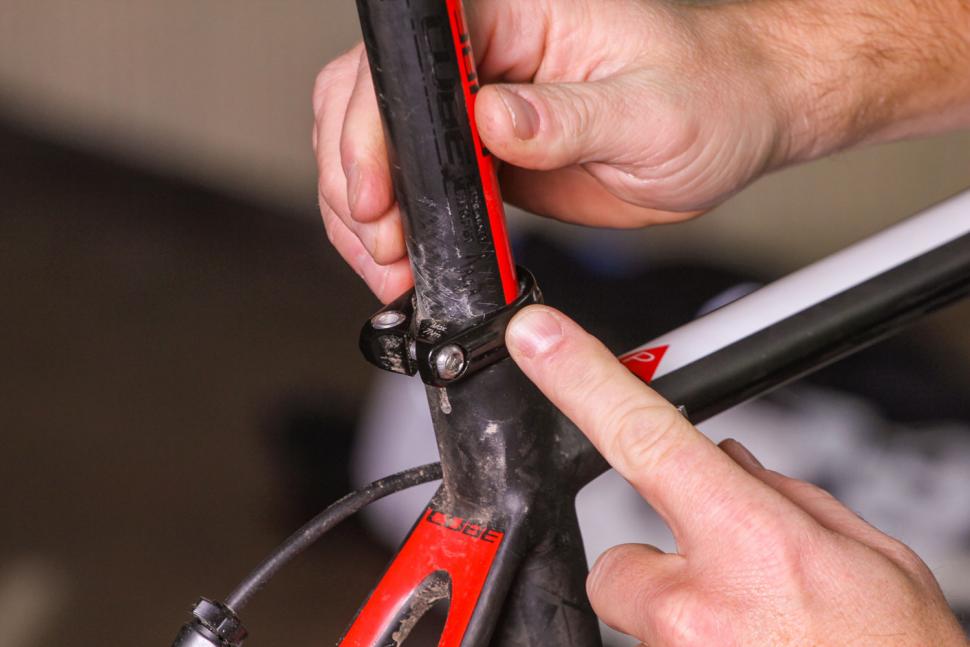
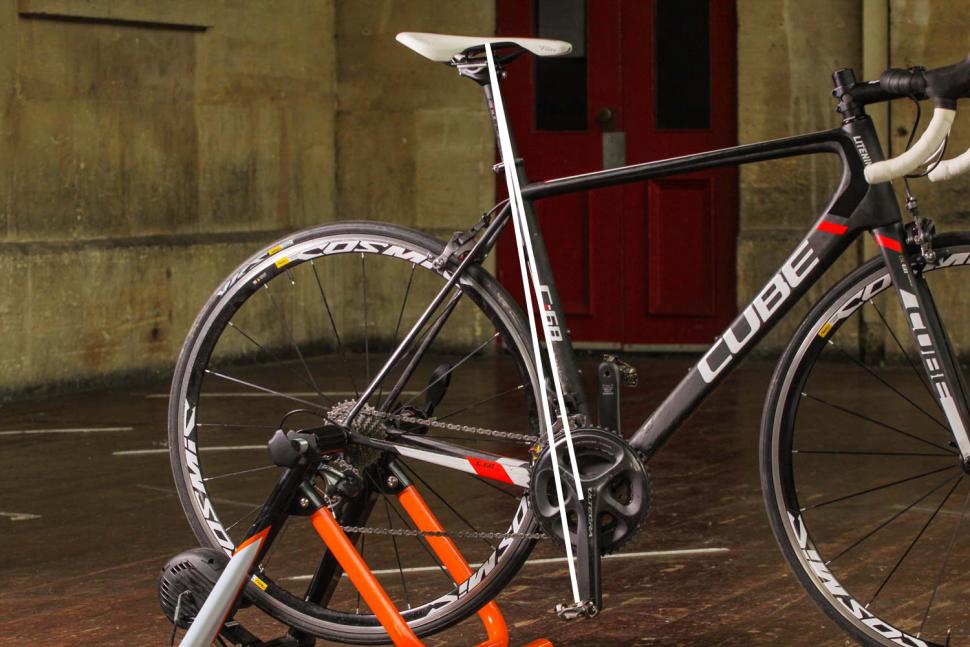
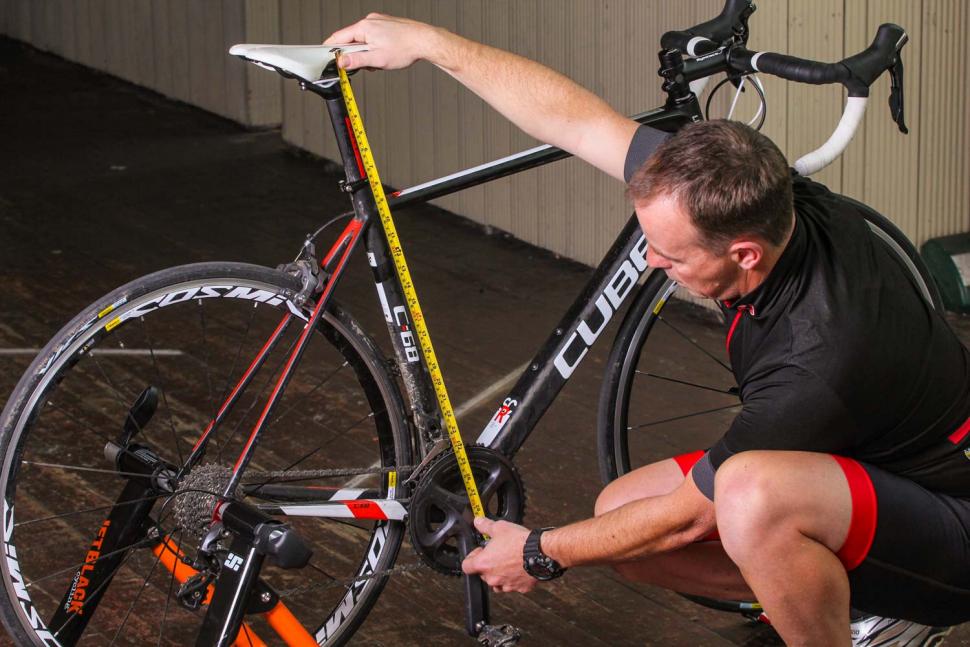
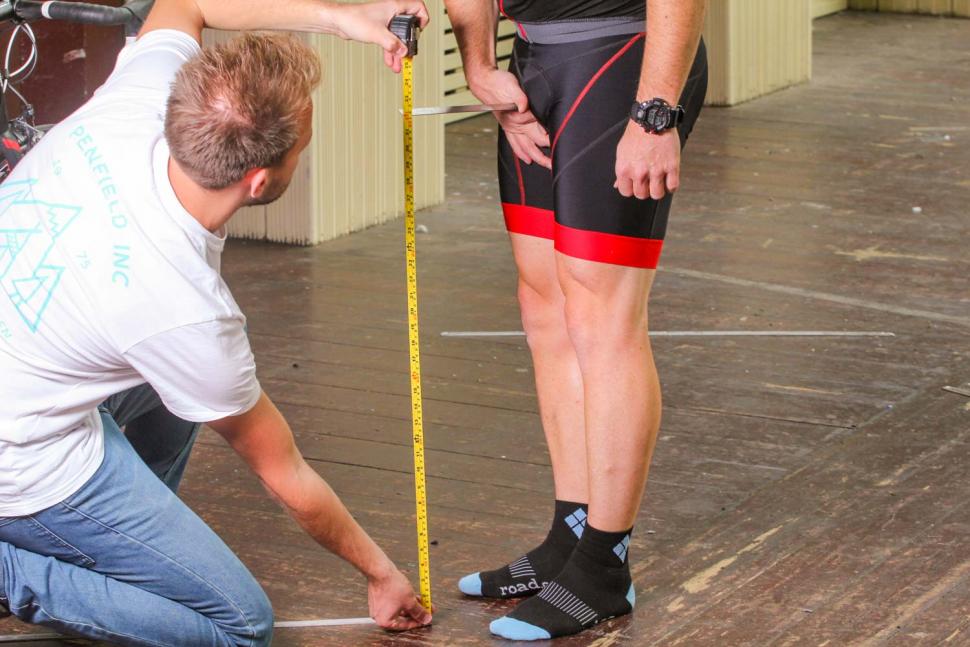
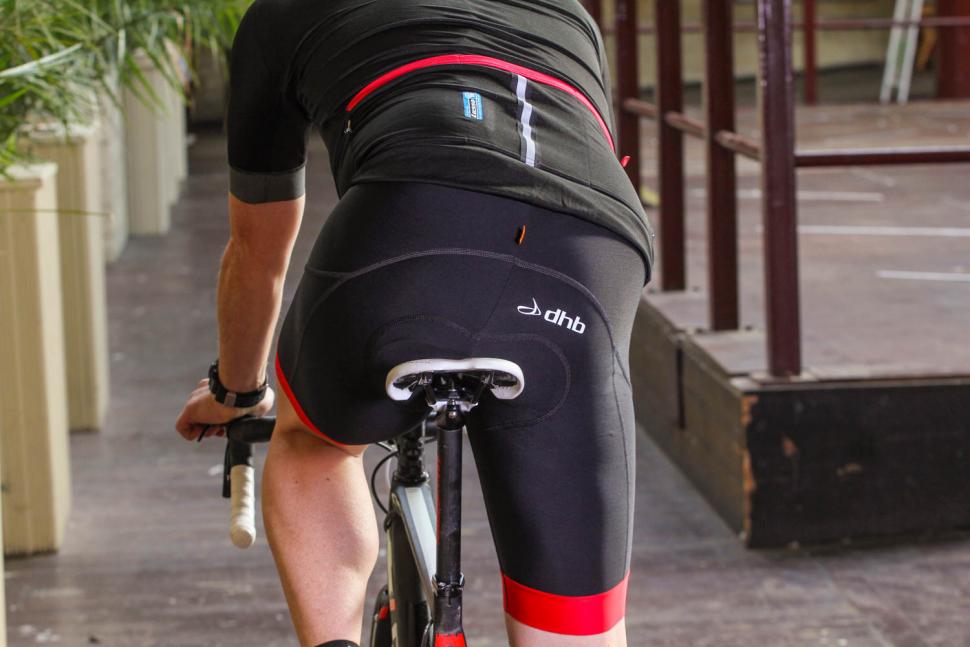

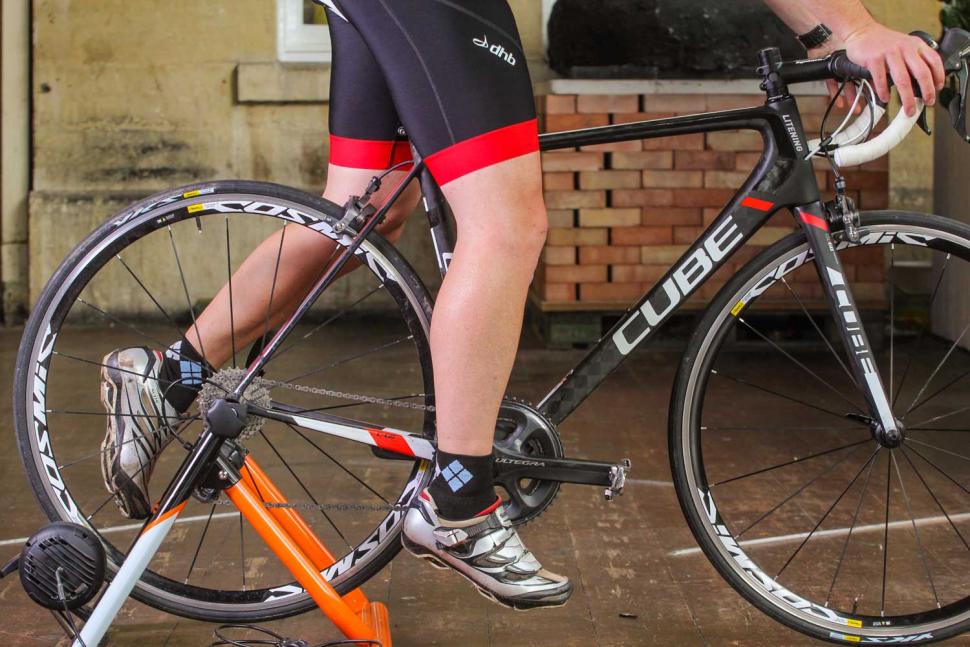
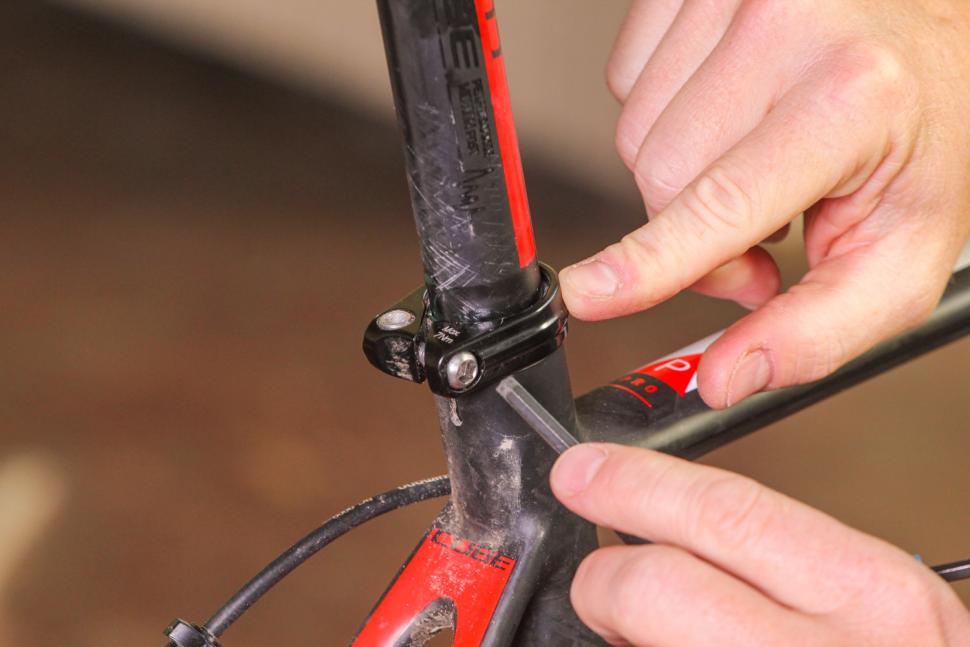
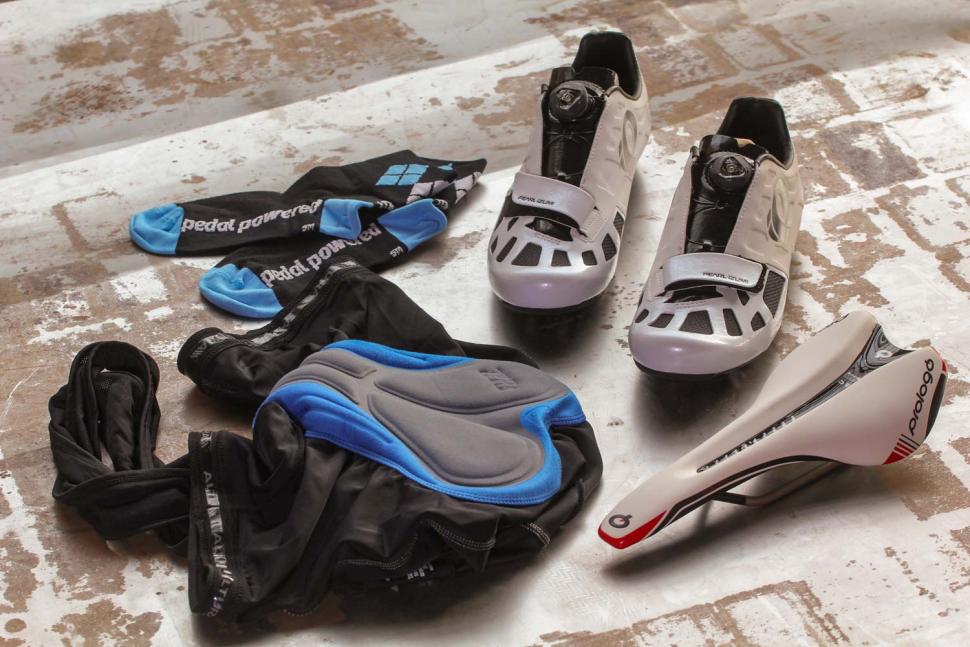

Add new comment
47 comments
Agreed, it's amazing how much of a difference going from the summer shorts with a thinner pad to the winter shorts with the thick warm pad makes to the saddle height!
I wonder why nearly every bike test photo on this website shows the rider with his saddle much too high, maybe the testers should read their own articles.
Ankling used to be what we were told all the pros did naturally. Now it's a sign your saddle's too high. I guess, just like bar width etc, there's an element of fashion in this.
Inside leg - 10cm is always my start point. (Measured from top of seat to BB).
Coincidentally that ... is actually pretty close to what my seat height is on my bike cycling bicycles. Also how I measure it.
According to "conventional wisdom", i.e. saddle to pedal 109% of inseam, or saddle to BB centre 88.3% of inseam, my saddles are consistently about 2cm too high. But if I put them any lower longer rides give me knee pain. What gives?
This is the never ending question, these setups only give a base/rough position. Then adjust to eliminate issues like knee or ankle discomfort. Once you can ride 50+ miles in one session and have no problems can you really say that your seat adjustment is spot on
I really can't imagine breaking out the tape measure for this. Bring a multitool with you while you ride, and move the seat up and down in tiny increments until you find something comfortable. Seat angle and setback also have a big impact- you just can't be afraid to mess around with your bike (although you might if you've just spent good money on having someone tell you what height your seat should be...)
IME it's straightforward enough to get a baseline but can take time to get it right for you, no single method works for everyone. Also some people are more sensitive to changes (termed 'micro-adjusters'), others are more flexible/adaptable.
"Use whichever calculation method works for you, but don't stop tweaking the measurement if the result doesn't feel optimal when you're riding. "
+1 Don't be afraid to experiment. Mark the seat post and get out the allen key.
I was fitted at LBS by measuring knee angle at extension, but later moved it. I've been riding long enough to know how it should feel... or, more accurately, to know how it shouldn't feel.
I advise making all adjustment with crank arm parallel to seat tube (I.e. 73 degrees) as this is POTE (point of terminal extension).
Setting height with crank axle at 6 o'clock gives a false measurement, especially when setting height with a goniometer based on knee angle.
I'd also recommended watching some of Steve Hogg's videos on bike fitting - very interesting info on cleat position and saddle height.
I use lemond method for me and my customers.... but use a long spirit level between the legs and against the wall to get a level measurement for the baseline calculation... and a long steel rule to get the measurement..... x lemond = saddle height... also measured with the long steel rule.... set 2 up today... took both on a 12 mile ride to "install" them properly with ability to make fine tweak adjustments to bar tilt, seat position and if needed a drop of a mm or 2 for the seat height.... all was well with this couples cycles....
It depends whether or not you pedal in a toe-down position. CXR94Di2s method would be far too high for me; I have a very flat footed position and can dip my heels at the bottom of each stroke.
It's not rocket science, nor is it an exact measurement based on leg length; try out the changes...
I use the exact same method as described by CXR94Di2 in the first post.
Me too, best place for a base point & then make minor adjustments from there.
Just measured mine using the LeMond method which I've not seen before & mine is pretty much correct to the millimetre.
Best method for me: pedal out of the saddle for 10 strokes or more, and then hold the leg in the fully extended position (it will be slightly bent). While holding leg in this position rock back to your seat and see if you find yourself sitting on it. If not, adjust saddle accordingly. Repeat until satisfied.
The idea is that you naturally reach your most powerful and comfortable leg extension while standing. You simply match that same extension while sitting.
Works great for me.
I used to use the Lemond method until I went to a bike fitter and they said my saddle was 3cm too low.
I then went to physio (who was a former top roadman) and he said that most bike fitters diagnose the problem correctly but then overcompensate by raising the saddle too high.
Cue much scratching of head.
The Lemond method or the 109% method are both arbitrary figures. They don't take femur length, torso length, etc into account.
As for bike fitters, now they're becoming more common (and less expensive due to increased competition) I think you'll find a lot more chancers (with little training or understanding) trying to make a quick buck.
In the end I had to lower my saddle 1 cm (from the bike fitters recommendation) because my hips were rocking so much. Go figure.
My method which I picked up from others. Put heel on pedal and straighten leg fully in down position. Adjust seat so you can do this without reaching or rocking hip over. This is your base measurement. Adjust slightly upwards till you feel that you ride with toes point slightly down ( get someone to video your action after riding 10 mins) Then it's a matter of long distance comfort and very fine adjustments
Pages